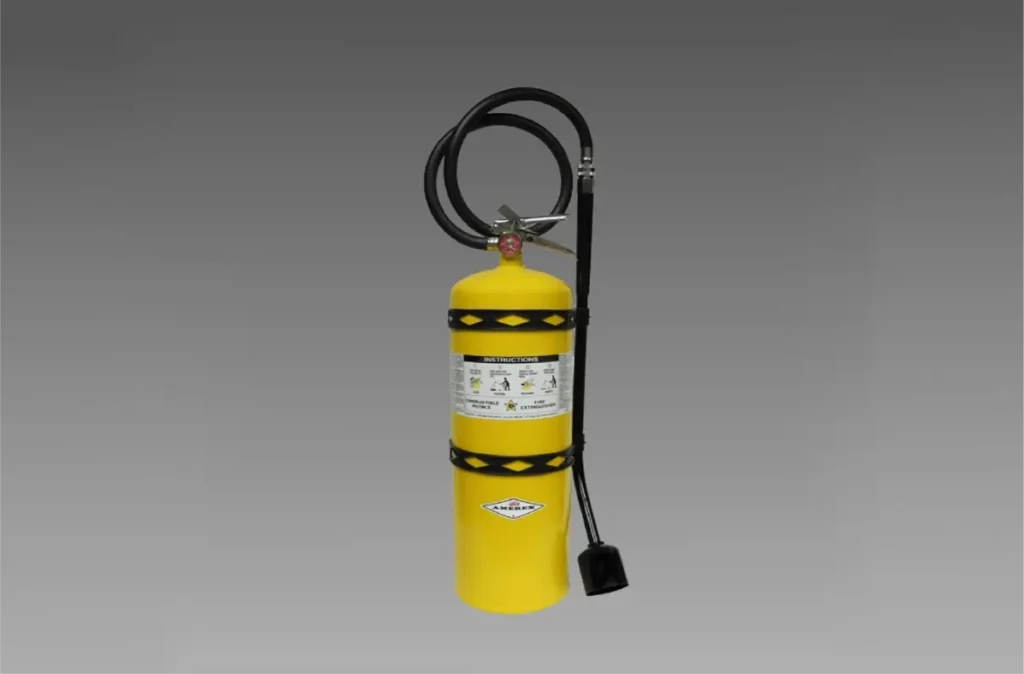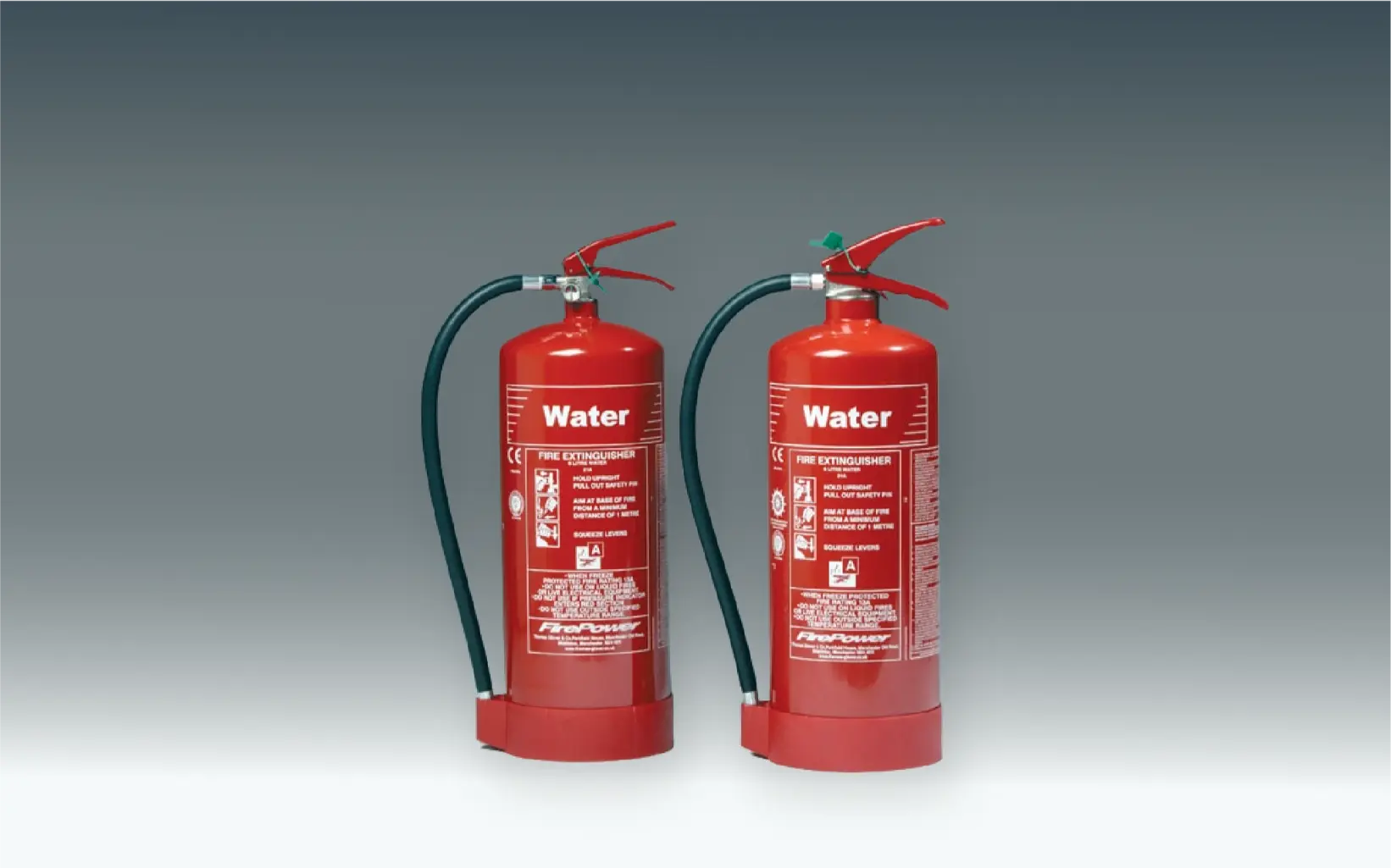
Class D Powder Fire Extinguishers
Discover Class D fire extinguishers designed for combustible metal fires. Learn about M28 and L2 powders, their applications, and how
Best for Class A
Water fire extinguisher is the oldest method of firefighting, and it’s still one of the most popular because it has the ability of not only reducing the available oxygen from a fire, but also providing cooling power. Only a water-based extinguisher can cool a fire down, thus bringing the temperature of the burning substance down to below the level at which the flammable vapours can be emitted. Water is also less damaging than foam, as it has no additives. :

Water extinguishes fires by cooling the fuel below its ignition temperature and removing heat from the fire triangle. It also helps smother the fire by reducing oxygen availability.
Water fire extinguishers are primarily effective against Class A fires, which involve ordinary combustibles like wood, paper, cloth, and some plastics.
Some models of water extinguishers have been di-electrically tested and are considered safe for use on electrical equipment. However, when using them in proximity to electrical devices, it is essential to exercise caution and take appropriate safety measures.
Contact us now to learn more about Water Fire Extinguishers and how they can be an essential part of your fire safety plan.
Water is a conductor of electricity, so using water on electrical fires can pose a risk of electric shock. Additionally, water is not effective on flammable liquid fires (Class B) as it can spread the liquid and may not extinguish the fire.
Water is not recommended for fat fires (Class F) in kitchens. Using water on burning oil or grease can cause the hot oil to splatter and spread the fire. Class F fire extinguishers, which use a special wet chemical, are more suitable for kitchen fires involving fats and oils.
Some water fire extinguishers may contain additives like antifreeze to prevent the water from freezing in cold temperatures. However, these additives don’t change the primary firefighting action of water.
It’s generally recommended to stand about 6 to 8 feet away from the fire when using a water fire extinguisher. This distance helps avoid the risk of injury from flames, heat, or falling debris.
Yes, water fire extinguishers can be used outdoors, but their effectiveness may be reduced in windy conditions. It’s important to consider the environment and wind direction when attempting to use a water extinguisher outdoors.
Fire extinguishers, including water ones, should be inspected monthly to ensure they are in proper working condition. Additionally, they should undergo a professional inspection annually.
Always follow the manufacturer’s instructions and guidelines for the specific water fire extinguisher you have, and make sure to receive proper training in the use of fire extinguishers.
Don’t hesitate to reach out to us, or you can easily fill out the form below. We’re here to assist you.


Discover Class D fire extinguishers designed for combustible metal fires. Learn about M28 and L2 powders, their applications, and how

are designed for safely extinguishing cooking oil and fat fires, commonly found in commercial kitchens and the food industry.

work on various fires, including liquids and electrical equipment, by emitting a cooling mist to suppress and contain the fire.